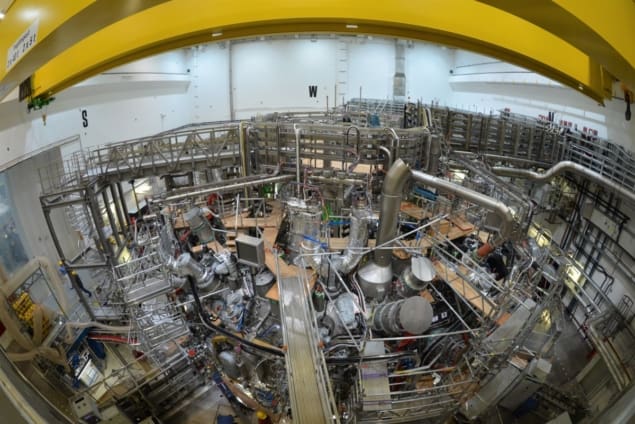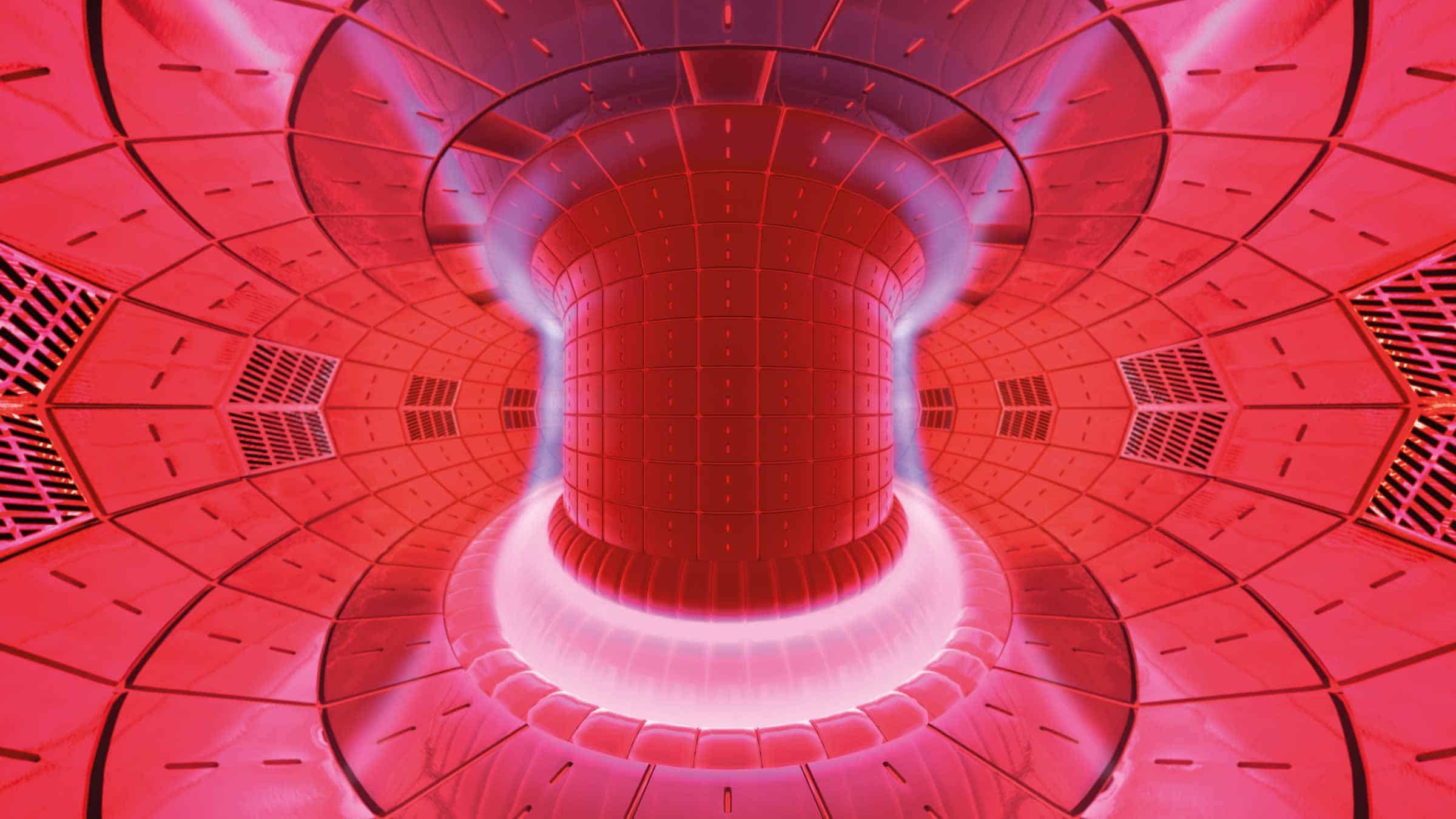
A new mechanism that could reduce plasma turbulence in stellarators has been identified in computer simulations done by researchers in the US and Germany. A similar effect has already been predicted to occur in tokamaks, which like stellarators, confine hot plasmas using magnetic fields.
A plasma is an extremely hot state of matter in which electrons and ions are no longer bound together. The Sun is a dense plasma where nuclei have enough energy to undergo fusion, unleashing huge amounts of energy. Physicists have long dreamed of achieving controlled fusion on Earth because it would be a source of clean energy.
Stellarators are promising candidates for fusion reactors because they could potentially maintain plasmas for up to 30 min, while tokamaks work in a pulsed regime (10 s pulses on the ASDEX Upgrade tokamak in Garching, Germany). However, turbulent transport – which causes the loss of both plasma particles and energy – can be an obstacle to maintaining confinement.
Turbulence-stabilizing effect
In 2018, Alessandro Di Siena and his co-workers at the Max Plank Institute for Plasma Physics in Garching discovered a new turbulence-stabilizing effect for tokamaks by doing computer simulations of plasmas. The effect involves a resonant interaction between suprathermal (fast) ions – generated via ion-cyclotron-resonance-frequency (ICRF) heating – and turbulence-driving micro-instabilities. For this resonance to occur, according to the analytic model they derived, the frequency of the most unstable, turbulence-driving mode must match the drift frequency of the energetic particles, imposing a constraint over the fast ions’ temperature. At the same time, whether this effect is stabilizing or destabilizing on the turbulence depends on the relative magnitude of temperature and density gradients (the first must be higher than the latter).
Di Siena is now at the University of Texas at Austin and has done this recent stellerator work with team members Alejandro Bañón Navarro, and Frank Jenko in Garching. They performed nonlinear gyrokinetic simulations to study how this mechanism can be used to stabilize the Wendelstein 7-X (W7-X) stellerator at the Max Plank Institute for Plasma Physics in Greifswald. While W7-X does not have an ICRF heating source yet, these latest predictions may help guide the design of the ICRF antenna at the facility.
Exciting results
“We are very excited about these results, and we hope they will help in the design and construction of the ICRF heating system in W7-X,” says Di Siena. “According to our predictions, this resonance mechanism might lead to new advanced scenarios with improved plasma confinement. The next step would be to confirm our findings in stellarator experiments”.
The simulations reveal that, in a plasma with a similar gradients and frequency matching, a dependency exists between turbulence stabilization and the temperature of the fast ions. Therefore, at a given value of temperature, turbulent transport reaches a plateau at lower turbulence levels. This behaviour is dissimilar from what they had previously reported for tokamaks, where a minimum value could be reached at a specific fast-ion temperature.

Ignition pending
The distinction derives from differences in the intrinsic designs of the two devices: the tokamak’s magnetic configuration is axisymmetric and can be described at each position via a single magnetic field line. In contrast, the stellarator’s magnetic geometry is more complex and must be defined by multiple field lines. This latest work shows that for each magnetic field line, there is different temperature where turbulence is minimized, explaining the plateau as the combination of all the field line dependencies.
The complicate geometry of stellarator magnets allows researchers to explore many artificial magnetic configurations that could maximize this stabilizing effect. The researchers looked at hundreds of possible geometries for the most unstable field line and described an optimized condition where the turbulent transport could be minimized.
“This work is certainly theoretically interesting, and could be experimentally relevant in plasmas in which a substantial fraction of the thermal energy resides in fast ions,” says Per Helander, head of the Stellarator Theory Department in Greifswald. “Under these conditions, one could experimentally test this theoretical insight, and such a test would shed valuable light on our understanding of turbulence in fusion plasmas. Whether the effect is actually important in the burning plasma of a fusion power plant is another question, and will depend on the operational regime.”
The research is described in a paper that has been accepted for publication in Physical Review Letters.
